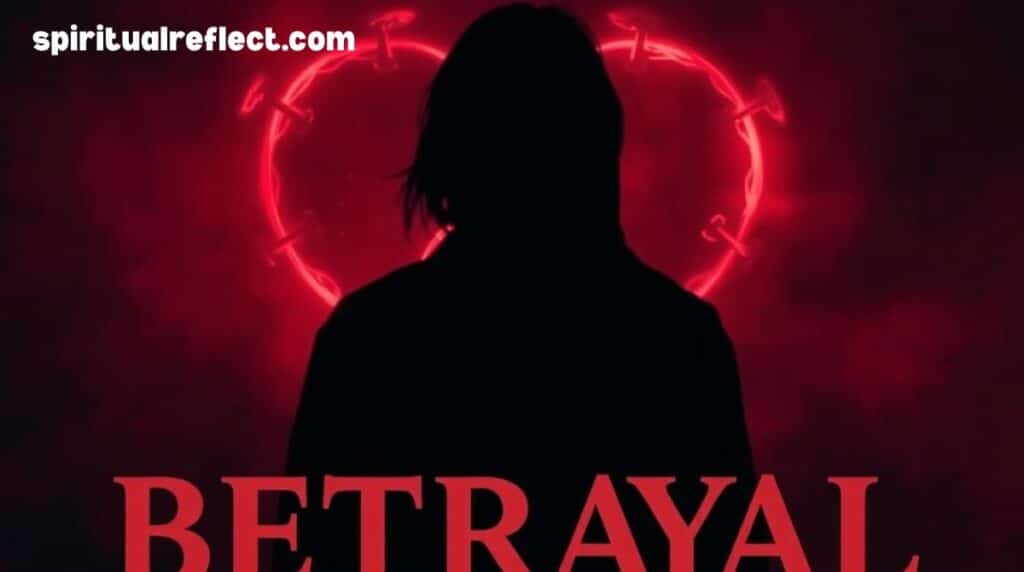Betrayal is the act of violating trust, loyalty, or faith in a relationship—personal, romantic, political, or spiritual. It often involves deception, secrets, and actions that go against expectations or agreements. Whether it’s a whispered lie, a broken promise, or a calculated backstab, betrayal cuts deep and leaves scars that linger long after the damage is done.
Few experiences ignite such a sharp emotional response. Betrayal hits like poison in the veins—silent, unexpected, and devastating. It can transform love into hate, loyalty into disloyalty, and certainty into doubt. It’s not just an act; it’s a turning point. In literature, mythology, and real life, symbols of betrayal carry weight because they mirror this intense emotional shift in unforgettable ways.
Exploring betrayal means unlocking stories of unfaithfulness, hidden motives, and shattered connections. From two-faced masks to poisoned chalices, each symbol reveals a deeper truth about how fragile trust really is—and how quickly it can be lost..
🔍 What Makes a Symbol Represent Betrayal?
Betrayal is more than breaking trust; it’s a violent emotional rupture. When betrayal strikes, we search for symbols—images, objects, even animals—to help make sense of that rupture. These symbols communicate deceit, infidelity, broken trust, and emotional pain with visceral clarity.
In this section, we’ll uncover 22 powerful betrayal symbols, grouped by theme: visual, natural, color-based, and historical.
Visual Symbols of Betrayal
Shattered Mirror
Glass that cracks reflects more than images—it shatters identity and illusion. In fairy tales and psychological thrillers, a broken glass/mirror marks the moment when illusion fractures and faith in someone collapses.
Fun fact: In Victorian England, smashed mirrors were a metaphor for “lost soul.”
Broken Ring
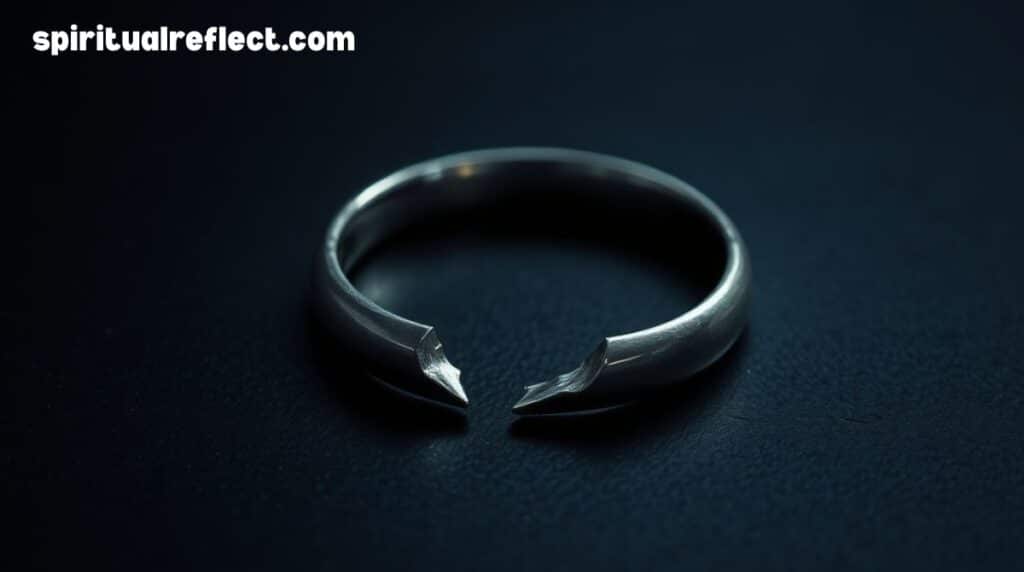
Marriage vows embodied in a metal ring become meaningless when shattered. A shattered ring tells a story of infidelity, lost promises, and romantic betrayal. Medieval literature often described broken rings as curses placed upon unfaithful lovers.
Dagger (Stabbed in the Back)
Nothing screams backstab like a dagger. Rooted in Roman history (Julius Caesar’s assassination), the image endures: a surprise attack from someone you trusted. The phrase “stabbed in the back” comes straight from this violent metaphor.
Trojan Horse
Deception masquerading as generosity—that’s the essence of the Trojan Horse. A gift becomes a weapon; the Trojan Horse warns of betrayal hidden in plain sight.
Torn Heart
A torn heart screams emotional pain and broken love. You’ll find it on jewelry, in pop ballads, and on greeting cards—an image that cuts deep every time.
Blood on Hands
Blood-stained hands symbolize guilt and the irreversible consequences of betrayal—Hamlet and Macbeth famously turn blood into a witness of treachery.
Two‑Faced Mask
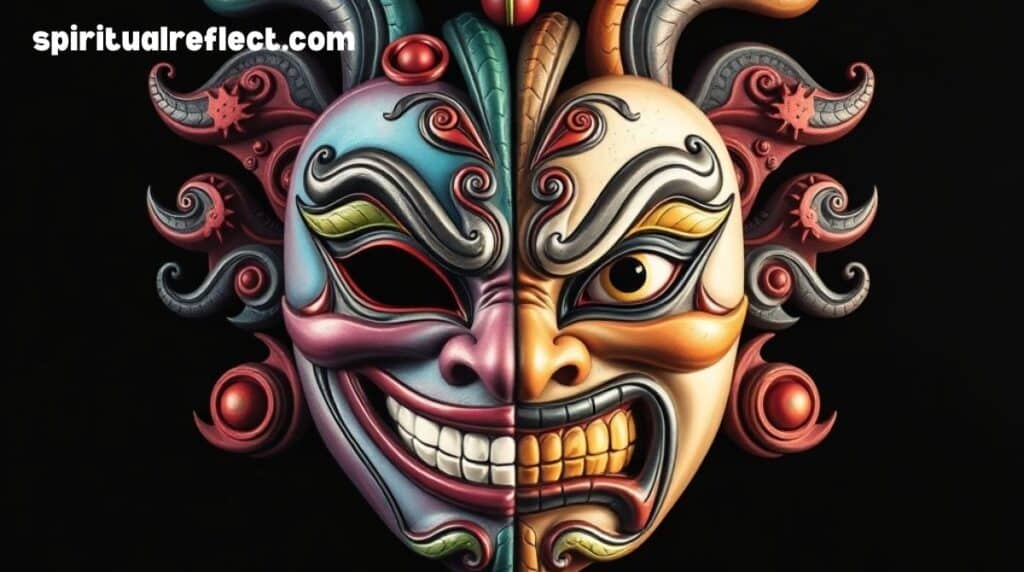
Two sides, one person: that’s the two-faced mask, or Janus, who watches from both front and back. It’s a visual shorthand for duality, deceit, and illusion in human relations.
Cracked Chain
A broken link in a chain stands for fractured alliance, disloyalty, or betrayal of a group or promise. Political cartoons and propaganda often use it to signify fallen unity.
Poisoned Chalice
A gift meant to heal that kills: a poisoned chalice sums up the ultimate deception. Biblical legends and royal betrayals feature this haunting image.
Tip: In political circles, refusing or accepting a poisoned chalice suggests whether you’re embracing or rejecting hidden danger.
Split Arrow
Once visible in warfare, a split arrow shows shattered peace or a friendship turned hostile—a symbol that your partner is now an opponent.
READ MORE: Night spiritual meaning
Nature & Animal Symbols of Betrayal
Judas Tree
Legend says Judas Iscariot died by hanging on this tree. Its red-black flowers signify treachery, loss, and guilt. You’ll find these trees across Europe and the Middle East, reminders of betrayal in mythic form.
Snake
Ever heard “snake in the grass”? The serpent’s association with temptation and deceit goes back to Genesis—the world’s classic betrayal story.
Scorpion
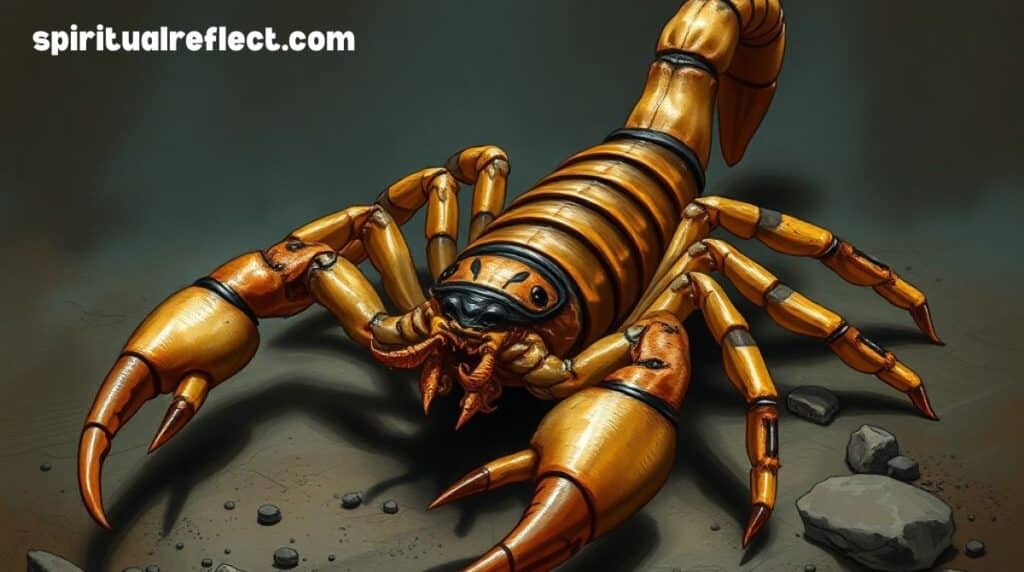
A creature that stings then hides—that’s the scorpion. In zodiac tales and tribal myths, it warns about trusting predators masquerading as allies.
Fox
Tricksters shine in folklore, and the fox is master. Viewed as sly and deceitful, it symbolizes manipulation, sabotage, and hidden agendas.
Coyote, Rat, Mole, Weasel
These animals share themes: cunning (coyote), stealth betrayal (rat out and “smell a rat”), underground trickery (mole), and two-faced deception (weasel words).
| Animal | Trait | Cultural Meaning |
|---|---|---|
| Coyote | Trickster | Deception in Native myths |
| Rat | Smell a rat / Rat out | Exposing betrayal or deceit |
| Mole | Underground access | Spy or hidden betrayal |
| Weasel | Weasel words | Devious communication |
Colors, Crystals & Flowers of Betrayal
Black (Color)
Black represents death, secrecy, and the unseen. In betrayal, it symbolizes hidden deception, a shadow that lurks behind trust.
Black Rose & Dahlia
Black roses and dahlias embody disloyalty, finality, and heartbreak. A wilted rose intensifies the metaphor—beauty wasted by betrayal.
Yellow Chrysanthemum
In parts of Asia, yellow chrysanthemums show sorrow and loss. Japanese funeral wreaths use them to acknowledge a deep sorrow conjured by betrayal.
Rue (Herb)
Shakespeare’s Ophelia distributed rue, a symbol of regret and poisoned relationships. The herb evokes sorrow over broken bonds.
Pearl, Opal, Black Diamond
| Gem or Crystal | Symbolism |
|---|---|
| Pearl | Hidden emotions, tears of guilt |
| Opal | Fragmented truth, illusion |
| Black Diamond | Rare imperfection, dark beauty |
These crystals symbolize the aftermath of betrayal—insight, truth, and the scars of deceit unveiled.
Historical & Religious Betrayal Symbols
Thirty Pieces of Silver
When Judas betrayed Jesus, it cost him thirty silver coins—a timeless symbol of venality, treachery, and remorse.
Kiss of Judas
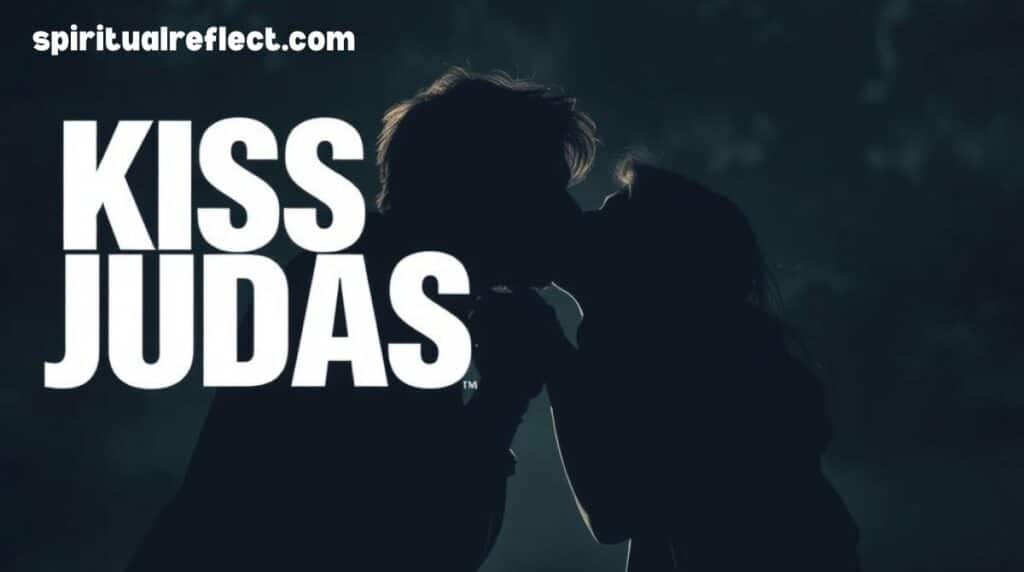
A kiss becomes betrayal in Jesus’s final moments. That tender gesture turns deadly—the most horrifying example of false affection.
Emotional & Psychological Symbolism of Betrayal
Broken Trust
Betrayal damages the invisible contracts of loyalty and faith. Broken trust can ripple through personal and social connections long after.
Guilt & Forgiveness
Often, betrayal brings guilt for both the betrayer and the betrayed. Symbols like blood hands or rue herbs wrestle with remorse and the desire for forgiveness.
Healing & Forgiveness
White roses embody hope and forgiveness. Despite darkness, reconciliation remains possible if we plant seeds of faith again.
Common Idioms That Capture Betrayal
- “Stabbed in the back” – sudden, unexpected hurt
- “Two‑faced” – showing one face to you, another behind your back
- “Snake in the grass” – hidden danger
- “Smell a rat” – sensing deception
- “Rat out” – to betray someone directly
These idioms thrive because they paint betrayal with visceral precision.
Case Studies: Symbolic Betrayal in Literature & History
Shakespeare’s Macbeth – Blood on Hands
Lady Macbeth scrubs “life from her hands,” but blood remains. This symbol shows how betrayal stains the psyche permanently.
The Trojan Horse – Strategic Deception
When the Greeks hid soldiers inside a horse, Troy fell. The Trojan Horse teaches that betrayal comes in presents cloaked in illusion.
Julius Caesar – Dagger in the Back
The phrase “Et tu, Brute?” defines betrayal. Caesar died by dagger—a stark icon for any faith fiend turned foe.
Why These Symbols Keep Resounding
- Visual punch – a broken mirror speaks louder than “someone betrayed me.”
- Cultural roots – many symbols go back to the Bible, myth, and folklore.
- Emotional shorthand – a dagger or cracked heart channels complex trauma into a picture you feel.
- Universal resonance – betrayal is common to us all—it transcends eras and cultures.
How to Use These Symbols Today
- Writers & Poets: Incorporate them to deepen emotional impact.
- Therapists: Use symbol recognition in therapy to help clients visualize and process.
- Designers & Marketers: Employ visual symbols to communicate themes of deceit or brand caution.
- Personal reflection: Recognizing which symbol you resonate with can help you process your own story.
Forgiveness, Healing & Moving Forward
Although betrayal cuts deep, symbols like white roses, dovetailed chains reconnected, and peaceful gestures offer hope for forgiveness. Healing isn’t linear, but symbols guide us—transforming loss, guilt, and broken trust into renewal.
Conclusion
Betrayal is more than just a broken promise. It’s a deep emotional wound that can change how people see love, trust, and even themselves. Symbols like the shattered ring, dagger, or black rose help us understand the pain behind the act. These signs speak when words fall short. They remind us how powerful and lasting betrayal can be.
Still, not all is lost. While it leaves scars, it also teaches lessons. It shows who we are, what we value, and how strong we can be after the storm. Healing takes time, but it’s possible. Trust can grow again—slowly, carefully. And those symbols? They may hurt now, but they also guide us to truth, wisdom, and sometimes, forgiveness.

Rana Ahmad is the creator of Spiritual Reflect, where she shares insights on personal growth, mindfulness, and meaningful living to inspire a more intentional life.

